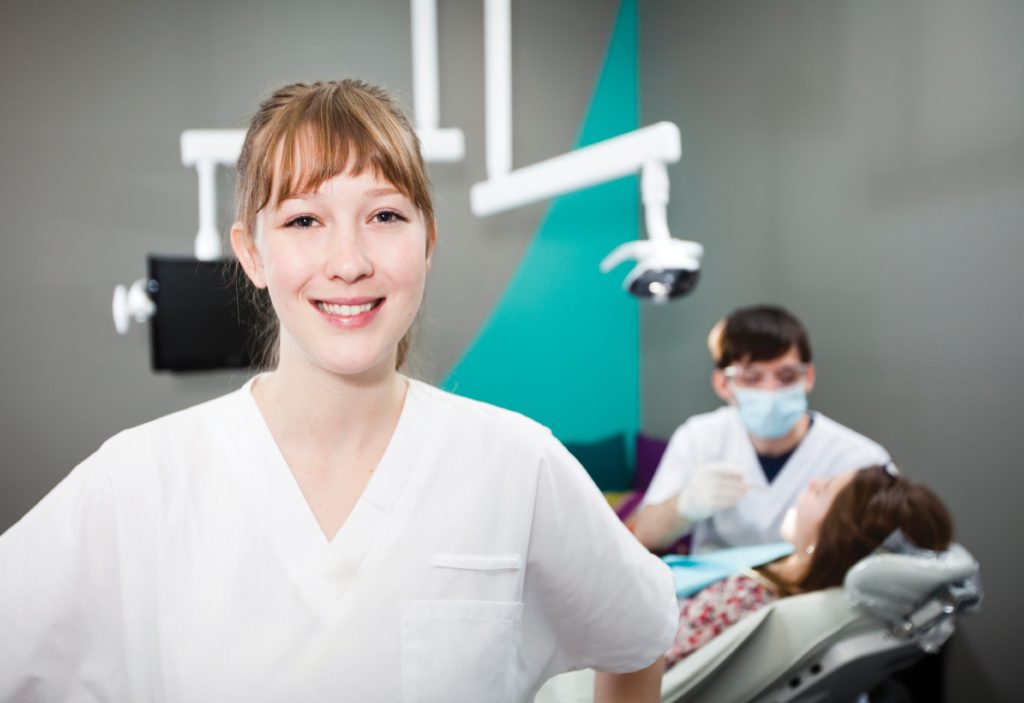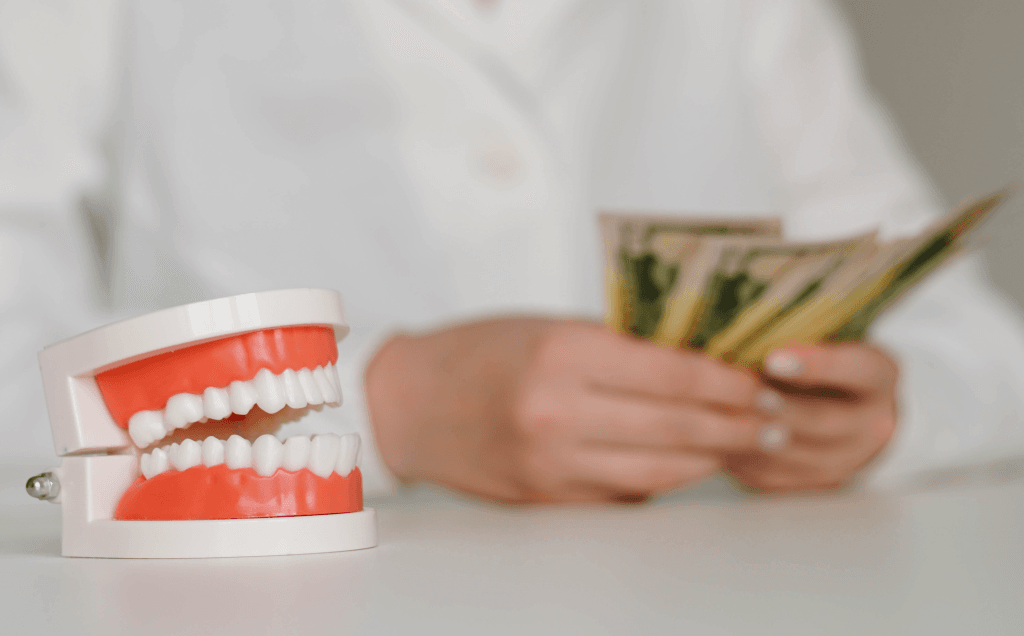Last updated on September 26th, 2024 at 01:52 pm
 In my opinion: a dental practice is only as strong as its hygiene department.
In my opinion: a dental practice is only as strong as its hygiene department.
When you think about it, the number of regular recall patients/visits and the production that comes out of Hygiene are what determine the stability of any given practice. These are patients that regularly show up and more or less willingly go ahead with any needed treatment when something goes wrong with their mouths. The additional dentistry that is there to be done on fifteen hundred to two thousand recall patients can keep a dentist very busy with little new patient flow. A productive hygiene department is a win-win for you, your patients and your practice.
That being said, I may run the risk of turning off dentists who have no hygienist. I don’t have any intention of hurting anyone’s feelings; but again in my opinion, a practice’s value plummets without a stable hygiene department.
Now, before I get started, I wanted to quickly tell you about our online training platform, DDS Success, which includes systems for building a productive and profitable hygiene department. You can schedule a free demo here to see how it works.
So, when I normally see a no-Hygiene situation, it comes down to cost versus income/productivity. The trick is to keep the area productive – then it all works. And if you’ve been holding off on hiring a hygienist due to cost, I’m going to show you in this article how to build a highly profitable hygiene department that will be more than worth the effort.
I’ve boiled this down to five fundamentals. Let’s have a look at them:
(Related: 5 Hygiene Department Myths)
1) The importance of regular hygiene visits needs to be driven home to patients–by all staff members.

Most patients don’t want to go back to the dentist twice a year. But they need to in order to maintain healthy teeth and gums long-term. So, they need to be reminded of that as often as possible. Everyone in the practice needs to encourage patients to come back for their next cleaning; insist that they get scheduled for it and then follow through with the appointment.
It absolutely has to be emphasized by every staff member in the practice–but if the doctor isn’t on board then the staff are fighting a losing battle.
Never before has there been so much information on the systemic effects of periodontal disease and gingivitis. Just go online and do a search for “periodontal disease, systemic disease, longevity.” There has even been medical research on a connection between perio and pancreatic cancer. I believe it’s time to take recall seriously. And so should your patients!
(Related: The MGE Profitable Hygiene Seminar – Free 4.5 CE Credits)
2) Calculate YOUR hygiene potential
Let’s take a look at your potential number of weekly recall visits for your practice. To do this, we’ll use our “Hygiene Equation” below.
Now, the first thing we’ll need to know is how many charts you have. We won’t go too far back – but let’s say the patients you’ve seen in the past five years. Let’s not get into the whole active-versus-inactive argument – part of the reason you may have a lot of “inactives” is no Hygiene Department! So, we’ll use this number to start with – number of patients seen for anything in your practice in the past five years. Once you have that number (which you should be able to easily get from your software), you can plug it into the “Hygiene Equation” that follows to come up with your potential weekly days of hygiene needed. Let’s say for our example, you’ve seen 3,000 people (patients) in your practice during this period. So we’ll use that for our “Number of Charts” amount.
a) Total # of charts: 3,000
b) Multiply this number by 2: 6,000 (i.e. as there is at minimum 2 recall visits per year)
c) Now, subtract 20% (to account for attrition – people leaving the practice): 20% of 6,000 is 1,200, so we subtract that from 6,000 and end up with 4,800.
d) Divide this (4,800 by the number of weeks worked per year: we’ll use 50 weeks here as you might take 2 weeks a year off (if you take more time off, this number would be lower): 4,800 charts ÷ 50 weeks = 96 potential recall visits a week.
e) We’ll break it down further. Let’s say your hygienist could see an average of 8 patients per day. Divide the 96 potential recalls by “8” and you will see the number of hygiene days. Using our potential number from “d” above, we get 96 divided by 8 = 12 days of potential hygiene PER WEEK!*
(Related: Why Your Hygiene Department Isn’t Growing like it Should Be)
*This is JUST RECALL and does NOT include new patients and Perio patients which will add to the number of days needed.
f) Now the potentiall depressing part: calculating your current hygiene compliance percentage. Take the average number of actual recall visits done (I would use a weekly average over a 3 month period) and divide this by the potential weekly recall (your number from “d” above). Let’s say you average 20 recalls a week (again – remember we’re not counting scaling appointments, new patients, etc. You can, however, count perio maintenance). So we take this 20 and divide it by 96 from “d”
You see 20 recall patients/week, 20 divided by 96= 20.8% Compliance Percentage (Ugh…)
With our veteran clients we target 80% hygiene efficiency–with one third of the overall production coming from the hygiene department. Brand new clients will typically arrive with roughly 20% efficiency and about 10% of overall production coming from hygiene; so if you don’t score that well when doing the calculation you shouldn’t feel too poorly.
 3) REACTIVATE your “inactive patients.”
3) REACTIVATE your “inactive patients.”
Now get a Reactivation Program started. This means calling and mailing to every patient you have ever seen that is still alive or hasn’t asked you to stop trying to reactivate them. Yes………….I mean EVERY patient that’s alive or hasn’t told you to get lost.
We dentists get our feelings hurt way too easily. If a patient hasn’t returned in a couple of years we are certain we did something wrong and they’ve switched dentists. But let’s look at this. Hasn’t it happened to you before that a patient comes in that you haven’t seen for a few years and they think they’ve only been gone for six months? You didn’t think they were your patient anymore but they still thought you were their dentist! Many really don’t have a concept of the last time they saw you. Most are certain it was more recently than it actually was.
So what does this mean? Give them a break and consider that anyone who is still alive and hasn’t told you they are not coming back is still your patient. That means you should still actively pursue getting them to return with phone calls, letters, patient newsletters, etc.
We can provide you with a step-by-step program for reactivating your inactive patients. It’s simple and easy to implement in your office. Just give us a call at (800) 640-1140 or write me at Greg@mgeonline.com and I’ll send it to you.
And again, DDS Success is a very valuable tool. In fact, we have an entire “training path” dedicated to the hygienist, where they get trained on patient retention, effective communication, customer service in a dental office, basic case acceptance and much more! Sign up for your free demo today – we’d love to give you a virtual tour of the platform.
(Related: New Patients: How NOT to Ruin Their First Impression)
4) Balancing recall visits, new patients, and scaling/root planing on the hygiene schedule
I won’t get into a big debate as to whether or not new patients should be seen first by the hygienist or the dentist. That is a personal preference and I can make a point for either case. However, if you do have the hygienist see them first, you must pre-block time in the hygiene schedule for new patients, as well as for scaling and root planing visits. Otherwise, you can get your hygiene schedule full of recall visits and have no time for new patients or scaling and root planing patients. Conversely, you could overrun the schedule the other way and have no time for recall!
You can figure out how much time per day you should schedule. That is a personal preference and you can figure it out because you’re smart.
5) The doctor’s exam.
Once you have a hygienist, most states require that the doctor examine the patient at least annually. This throws another wrinkle into the doctor’s schedule. When to do the exam and how long should it take?
First of all, the hygienist must be willing to be interrupted at any time during the appointment. That way the doctor can come do the exam as they have time in their schedule.
Doctor: this is not a time to socialize, find out how the grand kids are doing, etc. If the exam is taking twenty minutes then everyone will run late and that causes stress throughout the office. The purpose of the exam is to diagnose any hard or soft tissue conditions. You really only have about one minute, at the most, to socialize. If the patient is seeing you regularly they really aren’t going to need any more time than that. So be professional, precise, thorough and quick.
Obviously this is a big topic and could take several thousand words to cover completely. What I’ve tried to do here is give a starting point to that is real and doable. We’ll be holding The Profitable Hygiene Seminar, a free one-day seminar covering this subject thoroughly, in several major cities around the country over the next few months. Check the The Profitable Hygiene Seminar page to see the schedule. And as I said earlier, I highly recommend DDS Success. If you really want to train your staff to be the best staff they can be and grow your practice, then DDS Success is what you need to do next.




Thank you Dr. Greg for your informative article. Would it be possible to get your step by step guide for patient reactivation, please?
Sincerely,
Dr. Yelena
Hi Dr. Yelena! I saw in our system you were emailed the reactivation program. Did you receive it? – Kelly, MGE Marketing Team
Greg, thank you for sharing this interested article. I would to get a step-by-step program for reactivating inactive patients.
Thank you,
Nohora Rodriguez, DMD